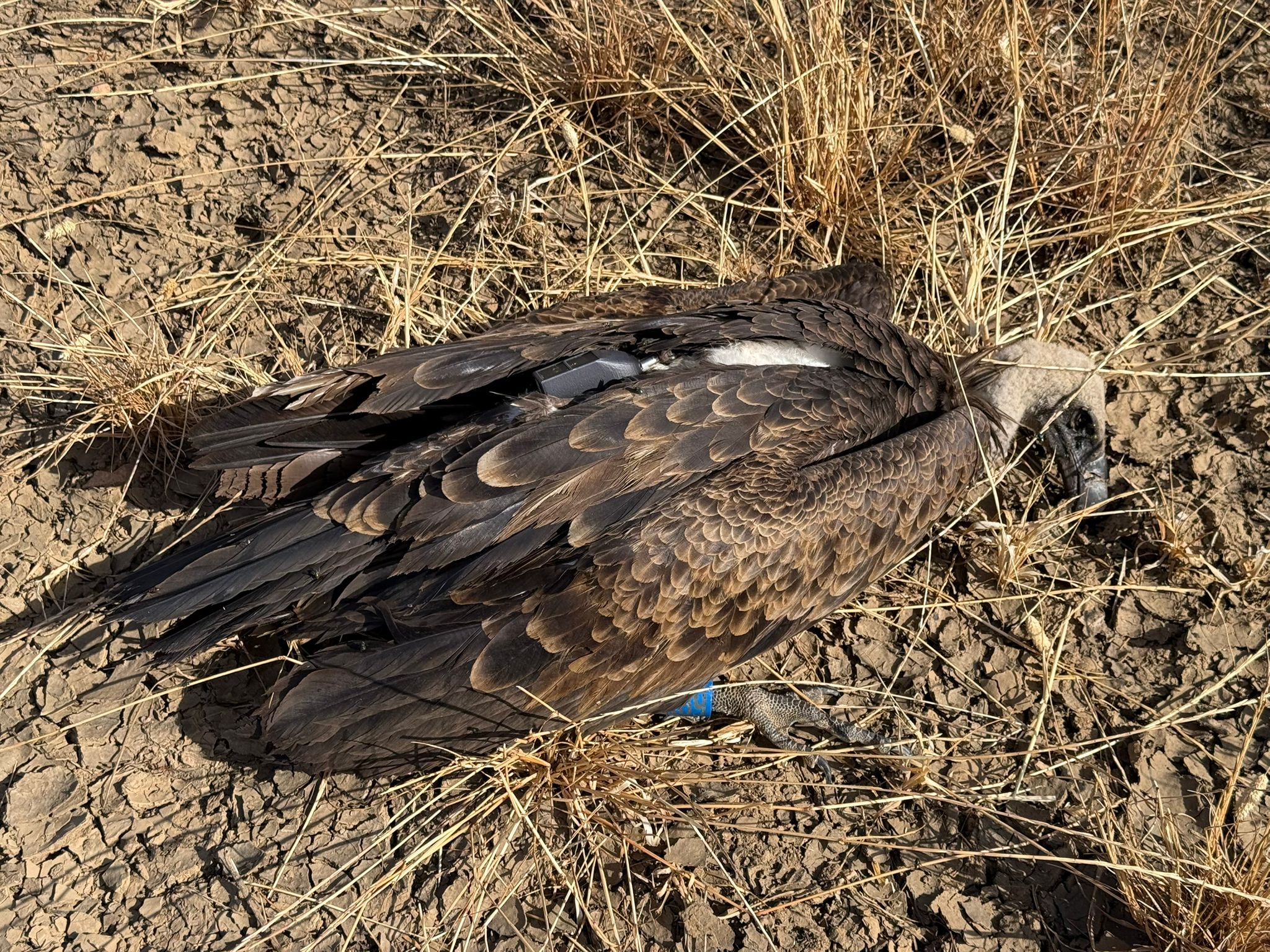As part of the LIFE Aegypius Return project, NGOs and the competent authorities are once again pooling their capacities and efforts to monitor the reproduction of this endangered species.
Ensuring exchange of experiences
The last few days of February brought together the partners of the LIFE Aegypius Return project and other relevant stakeholders at Herdade da Contenda, in Moura (southern Portugal) to exchange experiences on monitoring the Cinereous Vulture (Aegypius monachus).
Monitoring this species, despite its large size and conspicuousness, requires experience and detailed knowledge in interpreting the behaviours observed. Each breeding colony also demonstrates a certain “culture” when it comes to the birds’ selection of nesting sites, which is why the organisations collaborating on LIFE Aegypius Return decided to repeat the good practice they started last year with a similar meeting in the Serra da Malcata.
At these meetings, the participants have the opportunity to practice the monitoring protocol that has been agreed between all organisations and which allows to determine the breeding success in each colony and each breeding season quite accurately.
The opportunity also encourages discussions about actions to minimise the threats that affect the species, such as poisoning and the disturbance of nests – especially in a transboundary context -, for which the authorities are crucial.
Monitoring an important breeding colony
All the participants were welcomed in Herdade da Contenda by the municipal company, itself a project partner, that manages this 5267-hectare property, which last year sheltered 17 to 18 breeding pairs. This colony is monitored in collaboration with the NGO Liga para a Protecção da Natureza (LPN), which was also present.
The NGOs Vulture Conservation Foundation (VCF), the project coordinator, Associação Transumância e Natureza (ATNatureza), Sociedade Portuguesa para o Estudo das Aves (SPEA) and Rewilding Portugal, as well as the Portuguese police (Guarda Nacional Republicana – GNR) and the nature conservation authority (Instituto da Conservação da Natureza e das Florestas – ICNF) also participated. GNR was represented by territorial detachments from the Nature and Environmental Protection Service (SEPNA) from all the regions close to the Cinereous Vultures colonies in Portugal – Miranda do Douro, Guarda, Idanha-a-Nova and Moura. Similarly, ICNF sent technicians and rangers who collaborate in monitoring the colonies in Serra da Malcata and Tejo Internacional (Delegação Regional do Centro), and Herdade da Contenda (Delegação Regional do Alentejo).


Participants in the technical meeting organised at Herdade da Contenda on 28 and 29 February 2024, respectively. ©Pedro Rocha- Herdade da Contenda, E.M.; ©VCF
During this meeting, 12 nests already occupied this year by Cinererous Vultures were visited, and incubation behaviour has been observed in six of them, which bodes well for this breeding season.


Left: Cinereous Vulture monitoring at Herdade da Contenda. Right: Nest occupied by Cinereous Vultures at Herdade da Contenda, photographed through a telescope. ©VCF
Checking a potential new colony
In an additional effort, some of the participants also carried out surveys in the São Mamede mountain range, in potential nesting habitat and/or locations with a regular presence of Cinereous Vultures previously tagged with GPS transmitters. One of the aims of the LIFE Aegypius Return project is to increase the number of breeding colonies in Portugal from the current four to five. The NGO Quercus, which also collaborates regularly in the project, has observed movements and some signs that point to the possible establishment of a fifth colony in the São Mamede region, however in this field trip it was not possible yet to confirm any nesting.
During the breeding season, all observations of Cinereous Vultures are made from far, with the help of binoculars and telescopes, in order to keep a safe distance from the nests and avoid disturbances.

Prospecting for favourable habitat for the Cinereous Vulture in Serra de São Mamede ©VCF
About the LIFE Aegypious Return project

The LIFE Aegypius Return project aims to consolidate the return of the Cinereous Vulture to Portugal and western Spain. It is co-funded by the European Union’s LIFE programme. Its success depends on the involvement of all the relevant stakeholders, and the collaboration of the partners, the Vulture Conservation Foundation (VCF), the coordinating beneficiary, and the local partners Palombar – Conservação da Natureza e do Património Rural, Herdade da Contenda, Sociedade Portuguesa para o Estudo das Aves, Liga para a Protecção da Natureza, Associação Transumância e Natureza, Fundación Naturaleza y Hombre, Guarda Nacional Republicana and Associação Nacional de Proprietários Rurais Gestão Cinegética e Biodiversidade.




